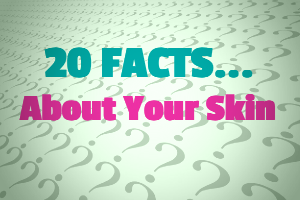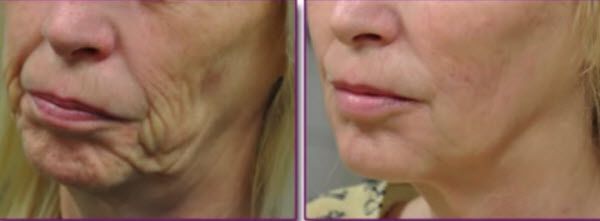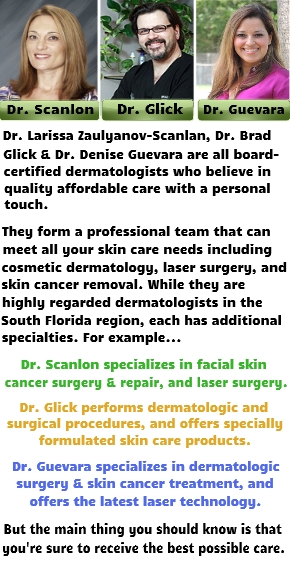 Our skin is essentially the glue that holds our bodies together. It also shields our internal organs against harmful environmental elements. Suffice it to say, we all take our skin for granted. )h sure, we know it’s important. But many people don’t fully understand it’s complexity and many functions. So, in this article I’m going to share some interesting facts about the skin. Hopefully, you’ll spot a few nuggets that will help you appreciate it and take care of it better.
Our skin is essentially the glue that holds our bodies together. It also shields our internal organs against harmful environmental elements. Suffice it to say, we all take our skin for granted. )h sure, we know it’s important. But many people don’t fully understand it’s complexity and many functions. So, in this article I’m going to share some interesting facts about the skin. Hopefully, you’ll spot a few nuggets that will help you appreciate it and take care of it better.
Skin Facts
1. Your skin consists of a super highway of nerves. In fact, that highway of nerves is 45 miles long.
2. Your skin is covered in bacteria that feeds on dead skin. This process can cause your pores to get clogged and lead to pimples or other bad skin conditions. So it’s important that you use a good exfoliate to eliminate the dead skin from your face and body.
3. As I just mentioned, the skin covering your body has nearly 32 million bacteria invading every inch of it. But before you panic and start taking 10 showers a day, the good news is that most of the bacteria are harmless.
4. By the time you reach the golden age of 70, your body will have shed nearly 106 pounds of skin. Wow, that’s a whole person.
5. The element or component in your body that determines the smoothness of your skin is collagen.
6. Go to your closet and pull out one of the typical blankets. Wrap it around you. Congratulations, that’s about the amount of skin that covers the body of a human adult – over six square feet of skin.
7. You’ve no doubt seen drawing of what ancient cavemen looked like. They were unusually hairy. I suppose there are still some modern men you could say that about. But whether animal or man, feathers, hir/fur, and hoofs are the evolutionary equivalent of your epidermis.
8. Americans love tattoos. By some estimates, nearly 40% of us (adults)have one or more tattoos.
9. What’s your weight? How many of those pounds would you guess come from skin? If you said 16% you’d be correct. But I’ll bet you were off by a lot, huh?
10. Now, you’re probably going to scrunch your nose of this fact, especially the next time you’re dusting around your home. Have you ever wondered where all that dust comes from? If you guessed that it comes from outside or the attic, you’d be wrong! Over 70 % of the dust is in fact dead skin. Wow!
11. When your head hits the pillow at night to get some sleep, you’re probably thinking that yours is the only head on the pillow. Not so fast. Your head is laying there along with the heads of over a million dust mites who are chopping down on your dead skin cells that fall off you every night.
12. While you walk, talk, and sleep, your skin is at work. It excretes certain oils to waterproof and protect your body. It also produces vitamin D and manufactures substances to fight potential infections.
13. So how many times have you experienced formication? No, silly, I didn’t misspell fornication. Formication is the term used to explain the sensation you get when it feels like insects are crawling on or under your skin.
14. Your skin is a shedding machine. It will drop a layer of dead cells every single day. And about once every month, you get a complete skin overhaul.
15. The next time you get goose bumps think of it like goose down feathers. That’s because those little bumps act to create a nice warm layer of air across your body.
16. Quick: What’s the specific name given to the soft smooth non-hairy skin on your hand palms and feet soles called? If you said glaborous skin, you are correct.
17. Not all the skin on your body is the same thickness. For example, the soles of your feet have the thickest skin, and your eyelids have the thinnest.
18. Where is the sweatiest area of the body? I’ll bet you said under your arms, didn’t you? Well, it’s actually your feet which contain over half a million sweat glands. Your feet can produce more than a pint of sweat per day. Now wonder it’s a good idea to wear socks.
19. The next time you get up and walk around the house, consider that your skin will shed somewhere around 30,000 to 40,000 dead skin cells every minute. Now, you can appreciate the dust fact above, huh?
20. By some estimates, man has occupied earth for about 200,000 years. And at one point during our evolution, all people had dark skin. But white skin first begin to appear about 20,000 to 50,000 years ago. This resulted when dark-skinned humans began migrate to much colder climates. The much cooler days and less intense sun caused people to lose melanin which is skin pigment.
So now you know a few more things about your skin that you didn’t know before. Share this article with your friends. And if they ever need to visit a quality dermatologist, we are here to help DermatologistCoralSprings.org.










